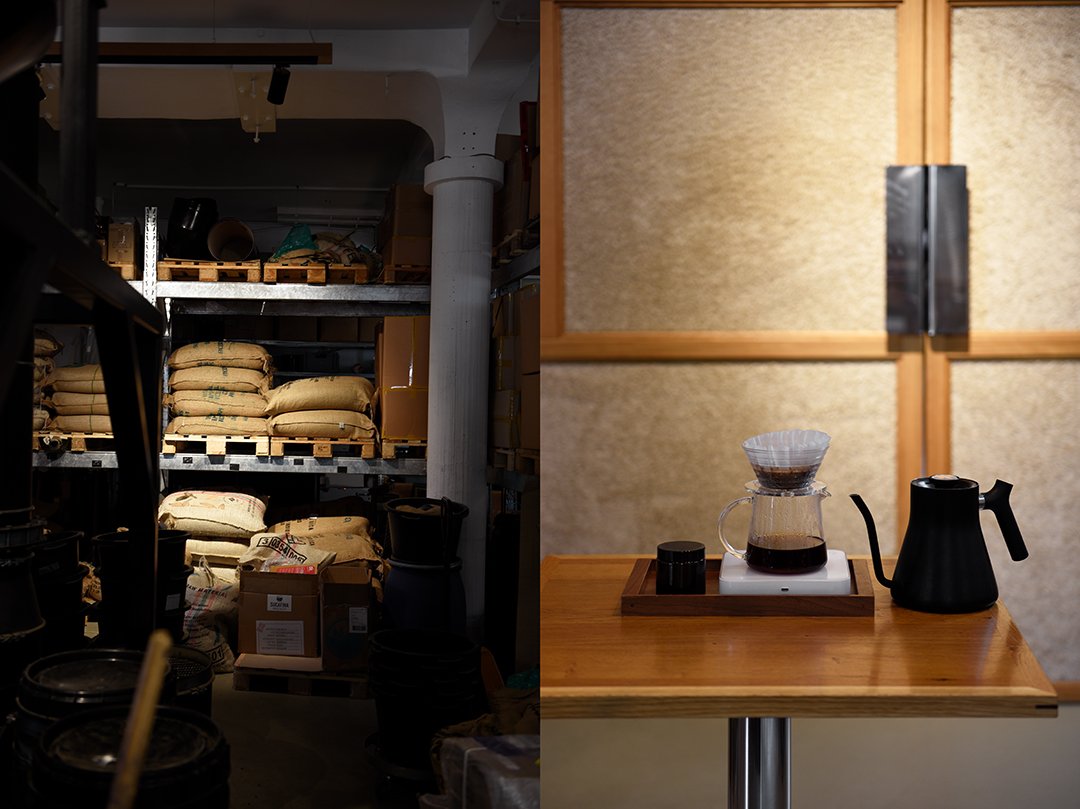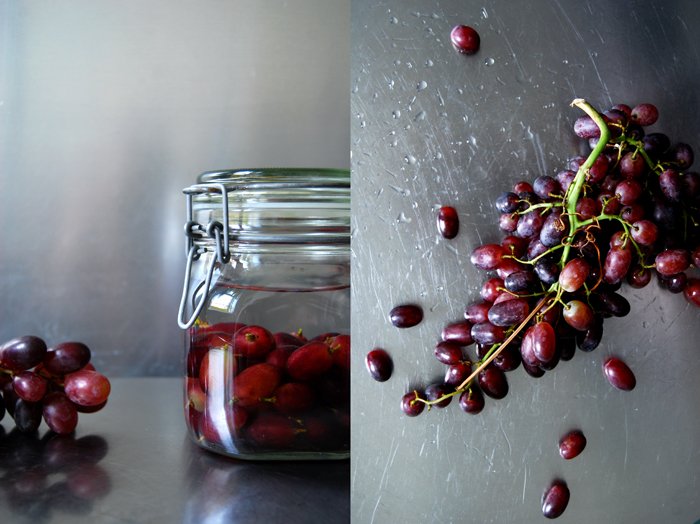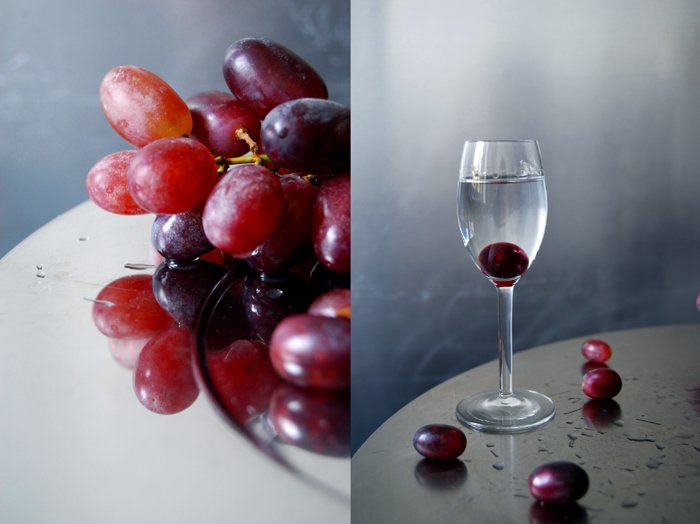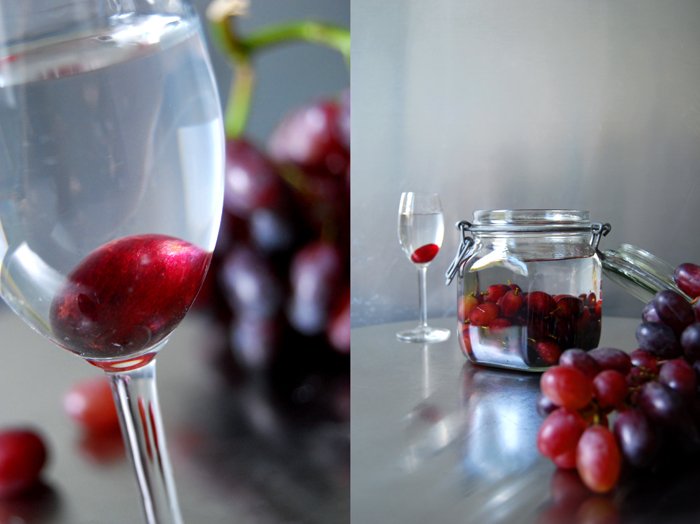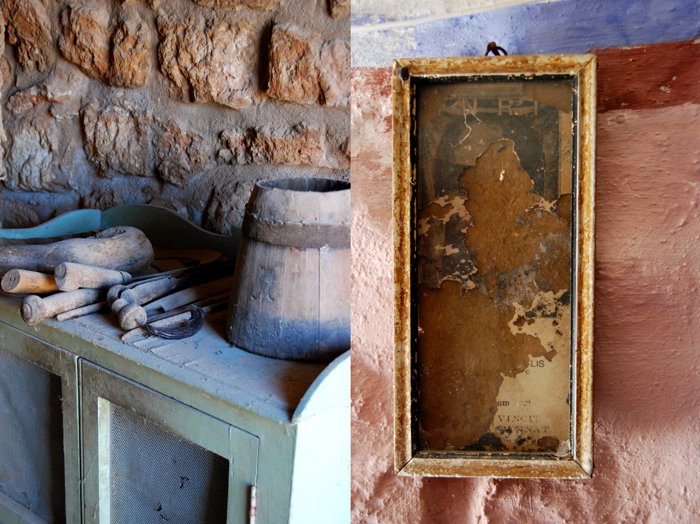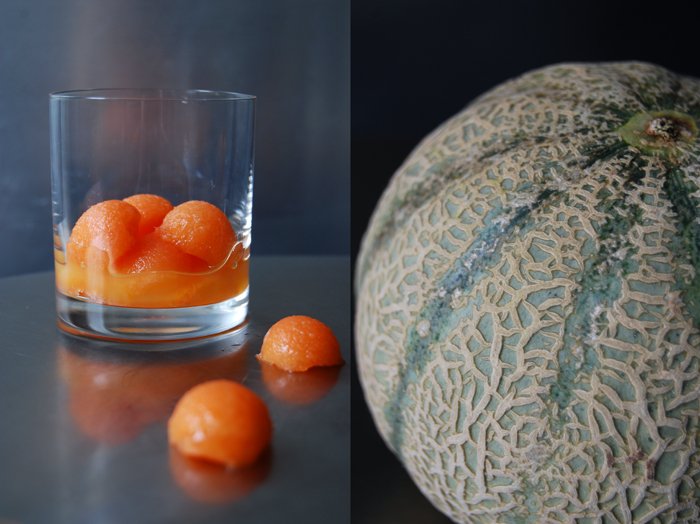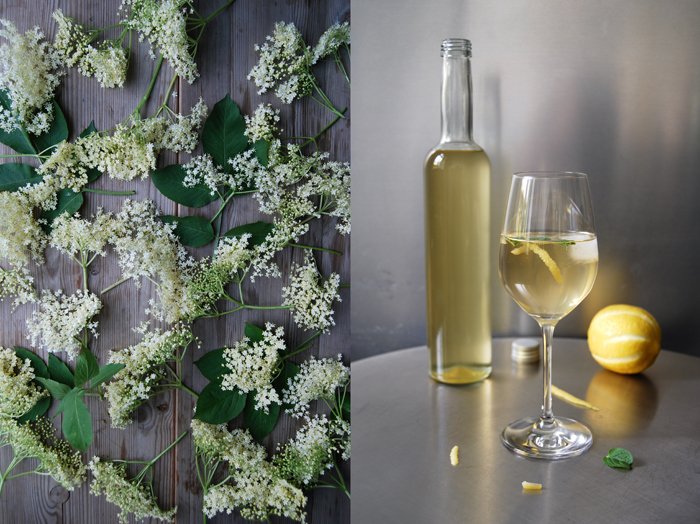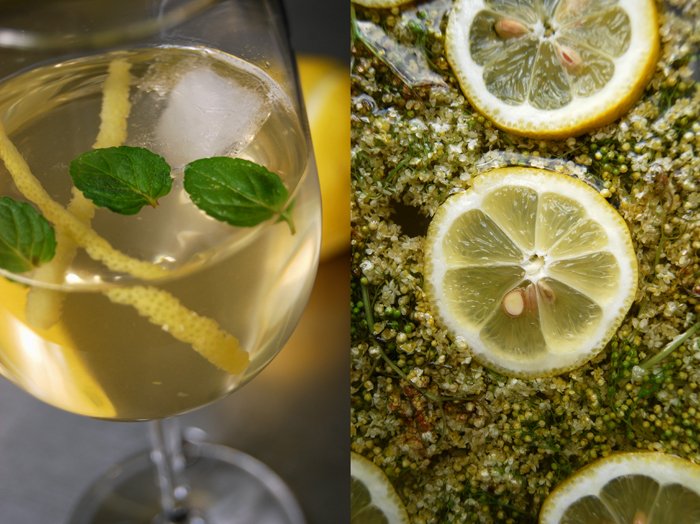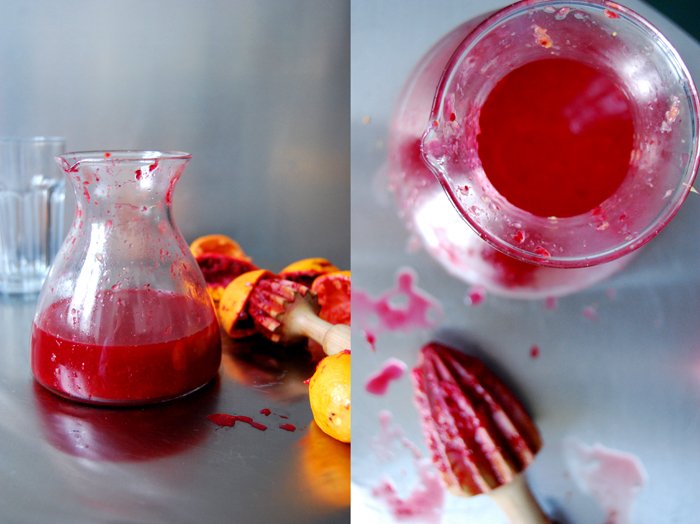Meet In Your Kitchen | Kiduk Reus' Bonanza - The Perfect Coffee
This post is part of my Meet in My Kitchen podcast: How did we get to where we are in life & what does food have to do with it
"There was no movement there. We were the movement." - Kiduk Reus
When a friend took me to Bonanza Coffee on Berlin's buzzing Oderberger Strasse back in 2006, I felt disturbed and suspicious about the whole thing. This had nothing to do with my beloved old-fashioned Italian-style espresso places where I'd usually have a cup of the dark, thick, bitter drink, a bite of flaky sfogliatella, while Italian opera was soothing my mind, playing in the background. It took me years to understand this new kind of coffee, to taste, to smell, and appreciate the whole complex flavor and aroma profile; to accept that an old tradition was taken in the hands of a bunch of young people to experiment and to create something different with the good old coffee bean that's been a part of our culinary heritage since at least the 15th century.
Young Kiduk Reus, one of the founders of Bonanza, was one of those kids - curious, brave, and fearless, and ready for a new chapter in his life. After studying design at the Willem de Kooning Academy in Rotterdam and at the Rietveld Academy of Arts in Amsterdam, after successfully working in the advertising industry, he felt that Berlin was calling his name in 2004. He packed his bags, the vague idea of starting a speciality coffee shop at the back of his mind. That was the beginning of a time that would later become known as the worldwide Third Wave Coffee Movement.
"I did it all myself. I fixed it. It wasn’t like the machines were actually working. I had figured out how to get them running and put modern equipment into it so it ran even better. And honestly, that even also took off. That actually saved our business in the end because what happened one day, it became a trend this thing with the cast-iron machines. And then I had a whole side business on that in the evening, which financed the whole Bonanza thing. I must have helped over 250 roasteries worldwide getting their equipment. It was huge." - Kiduk Reus
Born in Seoul, South Korea, adopted at the age of 4 by an American mother and a Dutch father, Kiduk grew up in the Netherlands in a town famous for cheese, in Gouda. Food played an important role. He remembers being a picky child knowing exactly what he wanted to eat and what he didn't. His palate was already refined, a skill that would come in handy later in his life. In the following years, Kiduk learned what would become a mantra in his life: I need this, it needs to be better, I improve it. And then, miraculously (or not), other people pick up on it.
Understanding that he has to be the motor to bring movement to his ideas, he always had the soul of an entrepreneur. Not waiting for others to come up with something great or to improve something existing, he jumped in first to create what he needed to move on and fulfill his mission. So when he started the first Bonanza coffee shop together with his partner he knew he wanted to roast his own beans as soon as possible to simply reach and keep the quality that he had in mind.
Coincidentally, Kiduk noticed that some old cast-iron equipment - stored in an old airplane hangar by a friend of his and that he had access to - was the best possible equipment for roasting coffee beans. So he jumped on the occasion and spontaneously started a business that would in the end finance Bonanza for a long time. He bought the old parts and machines, added new parts to make them work even better, and became the Berlin man to supply roasting machines to all the big names in the speciality coffee roasting business worldwide. Blue Bottle, Seven Seeds, and about another 250 coffee roasters went to Kiduk Reus' workshop and got their vintage equipment, customized by Kiduk himself and his growing team of mechanics.
Kiduk says he listens to his mind more than to his feeling. His intuition is definitely absolutely reliable. Many of his decisions seem random at first but then turn into something great. The street where his first shop is on, on Oderberger Strasse, was called Street of Death by house owners and estate agents as none of the businesses lasted long. This street changed a couple years after Kiduk arrived. Leading to Mauerpark - a park that would become famous and turn into a weekly festival scene attracting 30,000 people on a Sunday, all passing by Kiduk's coffee shop - this street would become one of the most buzzing spots in the city. In hindsight, he couldn't have chosen a better location.
"I get also pushback from my staff because they are again more like It should be like wine, it should be the terroir, it should be the way we’re roasting it, you should be tasting the processing and the varietal! And I’m like But this is so boring, we’ve been doing that all the time, can we not do this!But no, that is not a serious drink! and then I look at the cashier and I’m like Aha, you didn’t sell any of it! No, we recommend them away from that drink, and I’m like Ok." - Kiduk Reus
When you pay so much attention to each single bean, when you know the farmers, when you set the quality bar so high, you want your customers to taste the whole range of flavors packed into that little bean by nature. Bad beans strongly roasted taste bitter, which covers up bad taste, but you don't want that to happen with good beans.
And now coffee geeks like Scott Tedder from Leeds (pictured below during a coffee tasting to prep for a coffee competition), Bonanza's head roaster and green bean buyer for years, come in to define the perfect roasting process that each bean will go through so that I can actually enjoy the complete complex flavor profile. This means that I have to - or rather want to - question my rigid ideas of how an espresso should taste. I want to give people like Scott a chance to show me something I haven't experienced before and to allow my taste to develop. And I must admit, it did change. The coffee beans that I buy now aren't as dark, aren't roasted as strong anymore. I'm slowly discovering the profiles of good coffee beans.
Kiduk and I might always be a little more experimental and willing to compromise than Scott when it comes to creating new drinks including espresso or hand-brewed coffee, but that's fine. A baker will always tell you to eat the warm bread just with butter, a farmer will recommend to enjoy the soil-studded carrot on its own, the wine maker wants you to stand in between the vines to feel the terroir when you take the first sip. It's an appreciation for nature and its miraculous creations, for the pure flavor. Maybe there's also a little pride involved - which isn't a bad thing - that they all manage to make nature's produce shine without distracting from the inner qualities.
Kiduk showed me how to hand-brew the perfect coffee with affordable equipment (you can find the recipe below). You can work with the most basic equipment you have in your kitchen but it's definitely worth investing a) in a digital gram scale and b) in good coffee beans from a coffee roaster who understands what you're looking for in taste and who will also grind the beans for you. However, go for small quantities as ground beans will lose their aroma quicker. You will slowly discover flavors in a hand-brewed coffee that you never tasted before and that's quite an experience. It turns making and drinking coffee into a ritual, like making a cup of special tea.
The podcast episode with Kiduk Reus of Bonanza Coffee is in English. You can listen to the Meet in My Kitchen podcast on all common podcast platforms; there are English and German episodes. You can find all the blog posts about these podcast episodes including my guests’ recipes here on the blog under Meet in Your Kitchen.
Listen to the podcast episode with Kiduk on:
Spotify / Apple / Deezer / Google / Amazon / Podimo
On Instagram you can follow the podcast @meetinmykitchenpodcast!
The Perfect Hand-Brewed Coffee
by Kiduk Reus / Bonanza
Makes 2 small cups, or 1 large cup
Equipment
1 coffee paper filter (such as Melita, Hario or Kalita)
Coffee dripper / filter (such as Melita, Hario or Kalita)
Glass hand drip coffee pot (or any other heat resistant glass pot)
Digital gram scale (Kiduk uses an Acaia scale)
Kettle with spout (or pour the boiling water into a tea pot with a spout)
Ingredients
220g water (at 95°C / 203°F)
16g coffee, medium grind (most speciality coffee shops will grind your coffee beans if you don't have a coffee grinder at home; the baristi at Bonanza will happily grind the beans for you if you happen to be in Berlin)
Type of coffee* used by Kiduk (which is also Scott Tedder's competition coffee)
Country: Costa Rica
Producer: William Mora
Varietal: Geisha
Processing method: natural / anaerobic (anaerobic coffee is fermented / processed in an environment that lacks oxygen)
* Ask your local speciality coffee shop for recommendations for coffee beans suitable for hand-brewing.
Place the paper filter in the coffee dripper, put the dripper on top of the heat resistant glass pot then place the pot on top of the scale.
Fill roughly 240ml / 1 cup of water into your kettle and bring to a boil. Let the water cool in the kettle for a minute until the temperature drops down to roughly 95°C / 203°F.
Add the ground coffee to the paper filter. Tare the scale so that it's on zero then wet the coffee with a little of the hot water. Wait a few seconds then pour 110g of water on top of the coffee in the paper filter, pouring circular, and wait a minute. Pour the other 110g of water on top, this time straight in the middle. Don't pour the water in at once, let it drip through the coffee gradually and evenly and make sure that the ground coffee doesn't swim in water. The brewing time (or water to coffee contact time) should be around 2:20 minutes.
Pour the coffee into 2 cups and enjoy immediately.
Meet In Your Kitchen | Mr. Susan's Kimchi Michelada
This post is part of my Meet in My Kitchen podcast: How did we get to where we are in life & what does food have to do with it
“Food really helped carve out my identity, it made me realize who I am, but it was also entrée into other cultures.”- Susan Choi
What happens when you grow up in Germany, move to LA to a Mexican neighborhood at the age of six together with your Korean parents then replace California with NYC and finally end up in Berlin with a Dutch husband? You love schnitzel, traditional German food and traditions like Sunday afternoon Kaffee und Kuchen (coffee and cake); your mother’s Korean cooking becomes a safe home inside yourself, a culinary bond to your roots; you develop a weak spot for Mexican ice cream, and adapt to the culinary playfulness that Americans master to perfection so easily.
This is the culinary map of Susan Choi, the owner of Berlin’s acclaimed Mr. Susan bar. Why Mr. Susan? - Susan says "Why not!" Susan embraces, no she celebrates all the colors and shapes, the flavors and textures, the stories and people that this map keeps bringing into her life. She dove deep into each of these cultures, they became a part of who she is today. She welcomes them with respect, curiosity, and infinite excitement and she finds in them endless inspiration to feed her mantra: Life’s a feast!
"My parents worked so hard for us. It is the classic kind of immigrant story where your parents work like a bajillion jobs, bajillion hours to make sure that you have everything that you could want in the world. Every single opportunity I have is because of my parents.“ - Susan Choi
Susan is one of the most positive and energetic people I know - I can’t really imagine her having a bad day. The obstacles in her life were tough, from brutal racism to having to learn to assimilate to a new culture over and over again yet she never let go of staying true to herself. She always knew, even at a very young age, that she either learns to stand her ground or lose the battle and drown. The headwind made her stronger, she’s a tough woman but she managed to keep her soft side. And this combination makes her so lovable, so irresistible, and charming, and also - especially when she stands, smiling, at the counter of her bar sipping an iced coffee - it makes her the cutest. I could just squeeze her.
Her New York life was quite glamorous. Working as a consultant, being a regular in the city’s spectacular restaurants, she developed an even deeper fascination for food in general but also for the people who create it. She learned about the magic of a place, thriving from the dishes, the guests, the location, the interior, and first and foremost, she learned that you lose everything without keeping quality on a constant high level. When you visit Mr. Susan bar today, you can see that she soaked up every detail during her journey. Susan truly understands what makes or breaks a bar, or a restaurant.
Germany’s culinary traditions left a deep mark in her memory. The food, the rituals, the smells, and taste, she finds home in them and they paved her move to Berlin. During one of her first nights in the city, she sat on a swing over the Spree river sipping an Aperol Spritz on a warm summer’s eve and she knew, this is my home. Catering pop-ups and events quickly opened the door to another new city. Berlin welcomed this vivid woman with open arms, thankful for the excitement she brought to the Berliners’ palates.
Be it her food or her drinks, there’s always something unique and thrilling in Susan’s compositions. Visually and in taste. Maybe because she learned to go through life with open eyes, she never misses a detail. The first drink I had at her bar was served with a paper straw with pink flamingos on it. The straw - and the flamingos - were upside down. It bugged her so much that she had to flip it. Together with her husband Robbert - the two are one of the most complementary couples I've ever met - she created a bar that excites, that is fun, and invites you to have a chat at the bar just like you were at home in your kitchen throwing a house party with only fabulous drinks and people (of course).
The recipe Susan shared with me for the Meet in My Kitchen podcast is her playful version of a Korean inspired Mexican drink: Kimchi Michelada! She makes a popsicle of tomato juice refined with kimchi juice and lime juice, Worcestershire sauce and soy sauce then she puts the bright red frozen juices into a glass and pours ice-cold beer over it. Despite the fact that I’m German, I’m not the most passionate about beer, but this drink got me hooked. There’s nothing better to have in your glass on a hot summer’s night! If you don’t have popsicle molds, you can use ice cube molds, that’s totally fine. Susan shows how to make the drink in a tutorial in the Highlights of the podcast's Instagram Stories, click here and go to the Highlight #5 Mr. Susan.
The podcast episode with Susan Choi is in English. You can listen to the Meet in My Kitchen podcast on all common podcast platforms; there are English and German episodes. You can find all the blog posts about these podcast episodes including my guests’ recipes here on the blog under Meet in Your Kitchen.
Listen to the podcast episode with Susan on:
Spotify / Apple / Deezer / Google / Amazon / Podimo
On Instagram you can follow the podcast @meetinmykitchenpodcast!
Kimchi Michelada
by Susan Choi/ Mr. Susan
No popsicle molds? No problem, try using ice trays for ice cubes!
Makes 6-8 popsicles
For the Kimchi Michelada Popsicles
0.5 Liter / 2 cups plus 1 tablespoon of unsalted organic tomato juice
250 ml / 1 cup plus 2 teaspoons freshly squeezed lime juice
100 ml / 1/3 cup plus 1 tablespoon kimchi juice*, or to taste, you can buy the kimchi directly from Susan (click here) or at any Asian shop and many organic shops
100 ml / 1/3 cup plus 1 tablespoon soy sauce
8-10 dashes of Worcestershire sauce (Susan uses L&P)
* Kimchi is a live product, it will continue to ferment over time thus have different flavor profiles so adjust to taste! You'll need to buy roughly 500g / 17 1/2 ounces of kimchi and then drain it for the right amount of kimchi juice. You only use the liquid for the popsicles, you can use the drained kimchi for other recipes or snacks.The more fermented the kimchi, the juicier it'll be.
For serving
About 2-4 tablespoons lime juice, to brush the outside of the glasses
Tajin (chili-lime sea salt), to sprinkle the outside of the glasses
Your favorite beer. We suggest a crisp lager. It can also be enjoyed with alcohol free beer!
For the popsicles, mix the ingredients together and pour into your favorite popsicle molds (or ice trays for ice cubes). Freeze for minimum 12 hours.
For serving, brush some lime juice on the outside of a tall glass (just a wide strip) and sprinkle with chili salt. Place a popsicle in the glass and pour in your favorite beer. Or pour the beer into the glass and lay the popsicle on top of the glass (looks prettier and more dramatic).
Mary's fantastic Drunken Grapes in Anisette
After I visited Mary Licari in her old watch tower in Malta for one of my meet in your kitchen features, I came home with lots of inspiration and a long list of recipes which I couldn't wait to try in my kitchen! On that hot afternoon in August, she treated me to so many delicacies and one of them was red grapes in anisette which she made in 1985! She topped her homemade banana ice cream (which was also to die for!) with these amazing grapes that have been in the bottle for almost 30 years! I almost felt too shy to eat them, that's such a treasure, fruit soaked in three decades of aroma!
It was my second visit to her house, just a day before I left the island to go back to Berlin. As always when meeting Mary, you have to be prepared for food, lots of good food! We wanted to stop at her house to say a quick good bye but as soon as we got into the house, Mary got out the plates and treated us to an amazing three course meal, finished with these fantastic drunken fruits. They were sweet and strong, a bit wrinkled, enhanced with the strong flavour of anise. The texture was a bit like jelly, but not as soft, they still had some crunch. It was a special culinary experience that I will never forget!
I've been back home for more than a month and I still can't get Mary's amazing grapes out of my head. There's no reason to wait any longer! The Italian grapes taste amazing at the moment and there's a bottle of Ouzo waiting to be emptied. I won't wait for 30 years to eat them (I'm too impatient!) but maybe I will keep some of them for a year or two.
Mary taught me to keep a little stalk on the grapes, that prevents the fruit from soaking up too much of the liquid!
Drunken Grapes in Anisette
For 1 large jar of grapes you need
Ouzo (or any other anisette) 600ml / 1.5 pints
red grapes 200g / 7 ounces
Cut the single grapes off the bunch. Don't pull them off, keep a short piece of stalk of about 1/2 cm / 1/4 " on each of them.
Put the grapes in a clean jar and fill with anisette until the fruits are covered. Let it sit for at least a month, or for years, like Mary. Serve with ice cream or cheese.
Basil and Mint Lemonade and organic farming on the island
My Maltese brother Alex has been telling me about his own juices, lemonades and non-alcoholic cocktail creations for months and when I saw him in the kitchen, chopping herbs and fruits, crushing ice cubes and working on new colourful compositions every few days, I asked him if he would like to come up with a refreshing lemonade recipe for eat in my kitchen.
It was a hot afternoon and I had just come back home from my visit to a farm in Bahrija. I had a peppermint plant in my hand which I got from Peppi Gauci who runs the Bahrija Oasis farm and Alex decided to mix a chilled basil and mint lemonade for me. It was delicious, not too sweet, fresh, lemony and with strong herbal flavours! You should try this recipe on one of these hot August afternoons, you just need to mix everything in a blender and within a few seconds you'll have a drink ready to revitalise your senses!
In the past few weeks I went to two farms in Malta which have completely different visions and approaches to farming. One of them is Bahrija Oasis which is a bio dynamic farm with organic produce (although not certified organic). Bahrija is part of the Permaculture Research Foundation Malta project, a holistic design philosophy which aims to create "community eco-systems in which plants, animals and human beings, and all forms of ecological diversity interact to produce a prolific, ecologically-sound and regenerative system that can support itself and life indefinitely". The idea is to provide all we need to live, like food, water, shelter, energy and health consistent with the Earth's natural balanced ecosystems, symbiotic and synergistic. This project brings together likeminded people with interests in green issues, ecological designers and students and the Bahrija Oasis provides the ground and platform for this work.
Eleven years ago Peppi got the land from his family and it wasn't cultivated at all at that point, just rocks, some weeds and steep hills, but over the years he managed to establish a working permaculture project. He changed the dry and arid landscape into a fertile farm, a biotope with a much greater biodiversity producing organic crops such as sprouts, herbs, seeds, medical plants and vegetables. Many students and volunteers visit the farm to learn more about sustainability, eco-education, wildlife and permaculture at the workshops hosted at the farm.
To get to the farm, we had to walk along a little stream covered with tall bamboo for about 10 minutes. This water is home to the very rare, endemic Maltese freshwater crab, Qabru. Their population is declining steadily and we were lucky to find one in the shallow water looking at us!
My second visit brought me to a beautiful place in Ahrax in Mellieha which is owned by Louis Cini (you can see his farm in the last 10 pictures). It's been in his family's hands for generations and his concept is completely different. It's a certified organic farm producing a great selection of wonderful fruit and vegetables. Organic farming isn't as established in Malta as it is in northern Europe but Louis is one of the pioneers. His fields produce some of the best grapes, figs and tomatoes I've ever eaten. He also grows sweetcorn, various kinds of lettuce, cabbage and marrows and much more, this farm looks as peaceful and welcoming as Louis' smile!
What made this visit very special to me, apart from meeting Louis, was being able to see the old rooms at the back of the farm which are no longer used and where his relatives used to live. Louis decided to leave them untouched, in the exact way they looked when his uncle who was the last to live there, passed away. It felt like traveling in time, to see the old furniture, the small, very basic kitchen working without electricity in the olden days, colourful enamel cookware in shelves that have been rusting for years, battled boots from the times of war, manual farming tools under piles of dust, quilts and pillows, photographs eaten away by time, by the wind and the salty air. Louis told me to take pictures, and I took many but at first I wasn't sure if I should show them. It felt like such an intimate insight in someone's life who isn't even here but Louis encouraged me, he feels proud to share his family's heritage. This is what life in the Mediterranean looked like 100 years ago, nothing changed in these rooms, this is a great gift!
Basil and Mint Lemonade
For 500ml / 1 pint of lemonade you need
fresh big basil leaves 10
fresh mint leaves 20
water or soda water, chilled, 500ml / 1 pint
freshly squeezed juice of 1/2 big lemon
granulated sugar 1 teaspoon plus more to taste
ice cubes for serving
Put the ingredients in a blender and mix well. Fill the lemonade in big glasses with ice cubes.
Cantaloupe Melon in Pastis
I have a weak spot for pastis, chilled with two ice cubes and a shot of water and I also use it to refine my recipes. I mentioned yesterday that I love this liqueur, it's my favourite drink in bars and bistros. In summer it feels refreshing and in winter time I get a cosy feeling from the strong anise aroma. It's my drink, for years now!
A while ago I travelled along the Côte d'Azur in my car. One afternoon I was seduced by the sight of a lonely bay and decided to stop for a quick swim. I left all my luggage in the car (I was young and unexperienced in traveling) and went for a late afternoon swim. When I got back, the car was gone and I was left with the clothes on my body, a towel and my wallet. I was in a mess, it was the first time something was stolen from me so I did what lots of daughter's do in a situation like this and called my mother.
Crying and sobbing, I tried to explain the situation on the phone. I wasn't in a state for a proper conversation, I felt ashamed. My mother, who is quite a pragmatic character, told me to calm down, get everything organised at the police station and then head to the next decent looking bar and have a pastis. I obeyed, the drink worked and I chilled out! In the end, I even got my car back but the luggage was gone (mine, my boyfriend's bags were still there!). I found out that the thieves tend to take the cars to a quiet place to empty them, lesson learnt! I never left my luggage unattended in a car again but I also understood that any material loss is frustrating but not a tragedy!
Over the years I found out that my beloved pastis has lots of potential in the kitchen, sweet and savory. Here's a fruity recipe which is a great summery alternative to an aperitif, sweet little balls of Cantaloupe melon in pastis! All you need is a ripe melon, either cut into cubes or scooped out with a melon baller (I found out about this strange name just a few days ago). You mix the fruit with pastis and water and pick them out of a whiskey glass with cocktail picks (or toothpicks).
Cantaloupe Melon in Pastis
This is a rough guideline which you can easily adapt to your taste.
For 4-6 people you need
a ripe Cantaloupe melon
pastis, chilled, to taste
For 12 balls of melon mix 1 1/2 shots of pastis with 1 1/2 shots of water and pour over the fruit. Put 6 fruity balls in a whiskey glass and fill just the bottom with the pastis/ water mixture. Serve with cocktail picks or wooden toothpicks.
You can either make it fresh and serve immediately or let the fruit soak for a few hours (which will increase their alcoholic impact), in which case you should keep it in the fridge.
This recipe focuses on the fruit rather than on the drink. You could also make a cocktail by adding just 2-3 balls of melon to a glass of 2cl of pastis filled with water and 1-2 ice cubes.
Chilled Summer Sangria with Rosemary
This is one of the best summer drinks, chilled summer sangria with lots of orange juice and woody rosemary. I use more juice than wine, so it's stuffed with vitamins - you could almost call it a healthy drink! The juice of a lemon adds a bit of sourness which I don't want to weaken with too much sugar. Only 1 tablespoon, that's all I put in and its enough to push the fruit's natural sweetness. A glass of brandy and a few orange slices make this Spanish classic complete. You could also chop in some peaches or strawberries, but I like to concentrate on citrus fruits. That's how I remember it from my holidays in Ibiza and that's how I love it. The rosemary is my personal customization, we tried it once and got hooked on it.
For 1 big bowl of sangria, I mixed 750ml / 1.5 pints of dry red wine with 900ml / 2 pints of good quality orange juice and 150ml / 5 ounces of brandy. I added the juice of a lemon, 1 tablespoon of sugar, 4 small sprigs of rosemary and the slices of 1 organic orange. The sangria is best slightly chilled and when it can sit for at least 1 hour.
Elderflower Syrup and a Friday Hugo Cocktail
It's Friday, the weekend is near, the perfect day for a summery cocktail! I don't need something frilly, I prefer simple and light drinks like a Hugo. This fruity long drink is from the Tyrolean region, it is originally made with sparkling wine but I like it with fruity white wine. The drink is mixed with elderflower syrup, mint leaves and lemon peel, all ingredients I find in my fridge or on the balcony apart from the syrup and this had to change! Not only does it make a nice cocktail it's also deliciously refreshing in a glass of sparkling water with a slice of lemon, for those hot summer days ahead of us! That's reason enough to make my own syrup.
I jumped on my bike, went to the park and came home with 25 big elderflowers. They just started to blossom here last week, I noticed their sweet smell as I was jogging. I've been wanting to try this recipe by my mother for years, she has been making her own syrup since she first tried a Hugo. I was always too late to pick the flowers and didn't want to repeat this mistake again. When I came back home with the elderflowers I was stunned by their beauty which tends to fade into all the leaves and flowers in the park so I never gave them proper attention. Their smell is enchanting and they feel so fragile!
I rinsed them briefly before pouring hot water mixed with sugar and citric acid over them and then I had to be patient. They have to sit for 5 days, stirred once a day, they infuse the syrup slowly with their distinctive aroma.
Strained and bottled, I was happy about my work, and satisfied to be able to make a Hugo with my own elderflower syrup from now on!
For the syrup
For 2 bottles of elderflower syrup you need
fresh elderflower umbels, briefly rinsed, 25 (use the whole umbel, cut the thick green stem off, the white florets should have just opened)
granulated sugar 1kg / 2 pounds
water 1000ml / 2 pints
citric acid 30g / 1 ounce
organic lemon, thinly sliced, 1
In a large pot, bring the water to a boil and dissolve the sugar and citric acid in it. Place the elderflower umbels in a large ceramic or glass bowl (not metal!), pour the hot water over them and put the lemon slices on top. Cover with a tea towel and let it sit for 5-6 days at room temperature, stirring once a day.
Sterilize glass bottles with spirit.
When the syrup is done, strain it through a cotton or linen kitchen towel and bring it to a boil. Strain through a towel a second time and fill in your sterilized bottles. Close well and put in your pantry. The syrup will last at least a year at room temperature, open bottles should be stored in the fridge.
For the Hugo cocktail
Fill a wine glass with sparkling wine or dry white wine. Pour in a dash of the elderflower syrup (to taste), add 1-2 ice cubes, stir and garnish with 2-3 strips of lemon peel and 3 mint leaves.
A Monday Morning Juice with Grapefruit, Banana, Orange and Ginger
I have the tendency to become overly excited as soon as the temperature rises above 10°C and the sun comes through for more than a couple hours. I know it's only the beginning of March but I already feel like spring. I want to get out my summer clothes and jump around in the springy, fresh air. I want to sit outside a café with a glass of chilled white wine, enjoying the warm sun. Unfortunately, there's still a gap in temperature between my dreams and reality which I don't want to accept (sometimes) and that's exactly the problem! I'm prepared for the coldest winter and arctic temperatures, I never get a cold, but at this time of the year, a stone's throw away from the end of the cold season, I tend to be too carefree and strain my immune system.
To avoid any deficit in vitamins, I start the week off with a powerful juice made of grapefruit, banana, blood orange and ginger. For two glasses of juice (400ml in all), I squeeze 1 pink grapefruit and 3 oranges. I add 1/8 teaspoon of grated ginger and half a banana, mashed smoothly with a fork. You can use a whole one but I didn't want its taste and sweetness to be too overpowering.
It's a true energy boost, like my January's Turmeric and Ginger Blood Orange Juice!
A juicy treat with orange, turmeric and ginger
Today's post is dedicated to all my friends who have a cold - unfortunately, quite a few at the moment. I would love to have them all over to nurse them, so I decided to come up with a tasty and healthy juice, full of vitamins and powerful roots to give them a recipe that will strengthen them again!
My current favourite, the blood orange, is as important to this juice as freshly grated turmeric and ginger roots. Turmeric is a great helper when your body suffers from inflammations, be it in the throat, the ears or your tummy. This root has an important role in the Ayurveda philosophy and is assumed to have a big effect on our cells like ginger which is an antiseptic boost to the immune system.
If you feel well and strong - which I hope you all are - then you can just enjoy this wonderful juice and its spicy, fruity taste. And anyways, prevention is better than cure.
For 1 big glass of this powerful drink, you will need around 350ml of freshly squeezed orange juice (I used 6 of my blood oranges), 1/8 teaspoon of freshly grated turmeric root and 1/4 teaspoon of freshly grated ginger. I bought the turmeric in a small organic shop around the corner but you can find it in lots of Asian shops as well.
Drink it, enjoy, and get well soon!
Mulled Wine to celebrate the start of Advent season
The Christmas markets are back and so is mulled wine!
Today we got our Christmas tree for the start of the Advent season. The tree is up and we clink our mugs filled with steaming mulled wine and enjoy the sweet smell of orange, cinnamon, cloves and wine. Now it's time to decorate our beautiful fir tree, listen to some music and enjoy the warm drink together with some mince pies. I love December!
Mulled Wine
My recipe is a rough guideline, play with it, which is what I do. Sometimes I add some orange or lemon juice or put a few ginger slices into the steaming wine, or refine it with some cardamom and aniseed.
red wine 1 bottle (750ml)
black tea, preferably Earl Grey, 300ml / 1 1/4 cups
brandy or rum 30ml / 1 ounce
honey 2 tablespoons
maple sirup 3-4 tablespoons
organic orange, scrubbed and rinsed, 1
cinnamon stick, broken, 1
cinnamon, ground, 1/2 teaspoon
star-anis, single pieces broken from one star, 3
cloves 10
optionally:
cardamom pods, cracked, 3
aniseed 1 teaspoon
orange juice 300ml / 1 1/4 cups
Slice the orange thickly and stud with cloves.
Combine everything in a pan, close with a lid and warm up slowly on medium heat. The spices need time to spread their flavors! But watch it as it shouldn't start boiling. Sweeten to taste, fill the steaming wine in mugs and get cosy!







